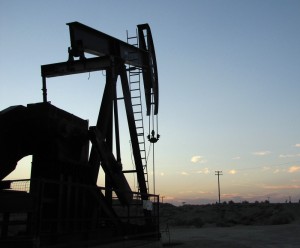Kustic’s agency is currently drafting the state’s first fracking regulations. Under the proposed rules, oil drillers would have to disclose where they’re injecting water underground at high pressure to release more oil. The rules would also add new oil well integrity testing (more about the rules).
For the other witnesses, including county officials and environmental groups, the focus of the hearing was what’s not known about fracking.
“We keep hearing from industry representatives that there are no problems with fracking in California,” said Andrew Grinberg of the non-profit Clean Water Action. “Yet, we haven’t adequately been looking.”
Grinberg and others say the draft rules don’t do enough to protect groundwater and that they lack transparent public disclosure. Oil drillers would also have the option to avoid disclosing the chemicals they use by claiming they are trade secrets.
“A moratorium on fracking while we look at these issues is not a radical policy,” Grinberg said. “Other states are doing it and it’s the sensible thing to do with so much at stake right now.”
While industry representatives stressed there's no evidence that fracking is increasing in the state, there is new interest in California's oil-rich Monterey Shale formation.
Some oil drillers recently began voluntarily disclosing fracking locations on the FracFocus.org website. State regulators say the site will also be used when mandatory reporting begins, but critics say it fails to meet public disclosure standards because the data can't be aggregated and the site is owned by an industry group.
Several state senators also raised concerns over the agency’s ability to enforce new regulations. “I’m concerned about our ability to follow up well,” said State Senator Loni Hancock. “No regulations are going to make any difference if we don’t have qualified inspectors in enough numbers to actually enforce those regulations.”
“The number of on-the-ground field engineers out inspecting that we have on staff is on the order of 50,” responded Kustic.
There are currently about 50,000 active wells in California.
“We’ve never made any secret, that as we develop the draft regulations further, we’ll be re-evaluating the need for additional resources and if there is one, we will be coming and knocking on the Legislature’s door with a request,” said Jason Marshall, Chief Deputy Director of the Department of Conservation.
State oil and gas regulators say it will be at least a year before rules are finalized.
